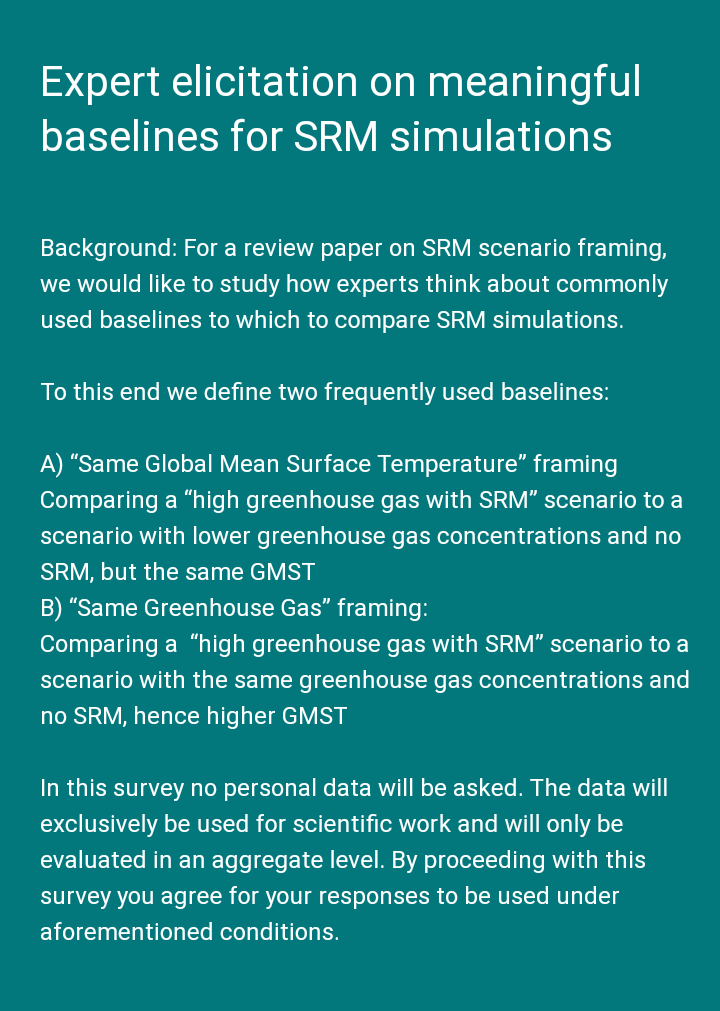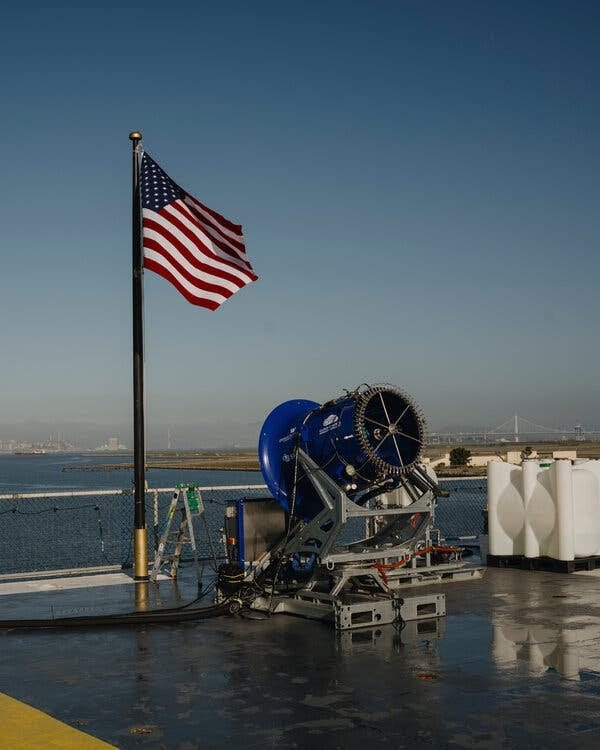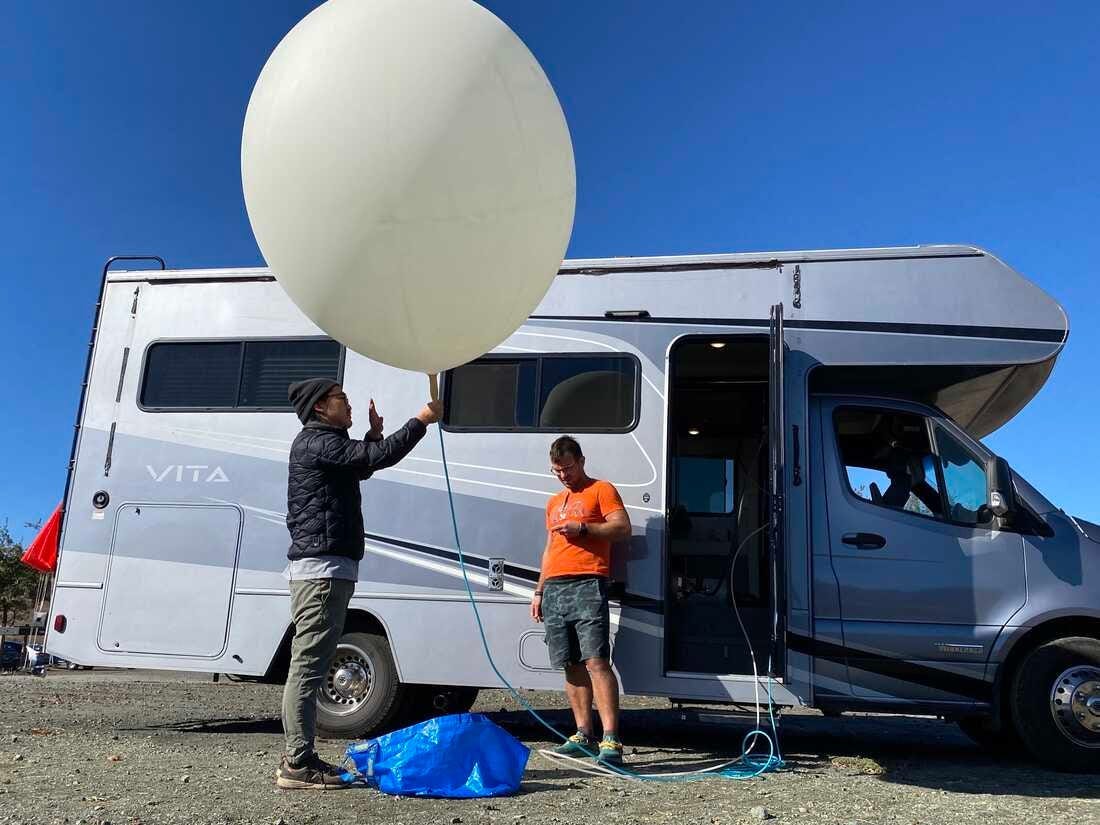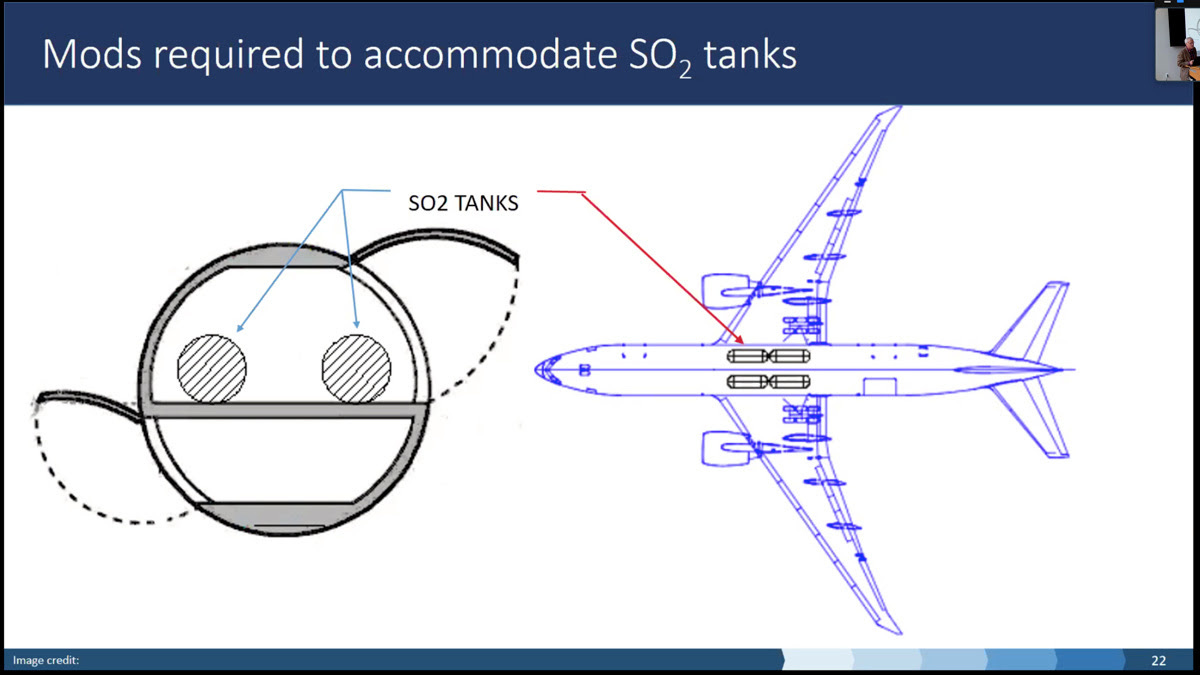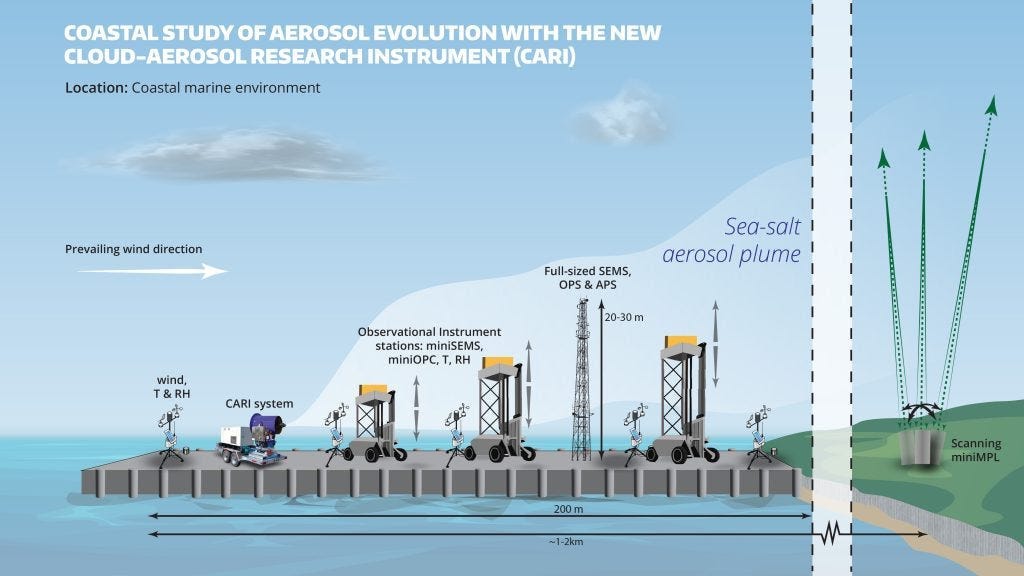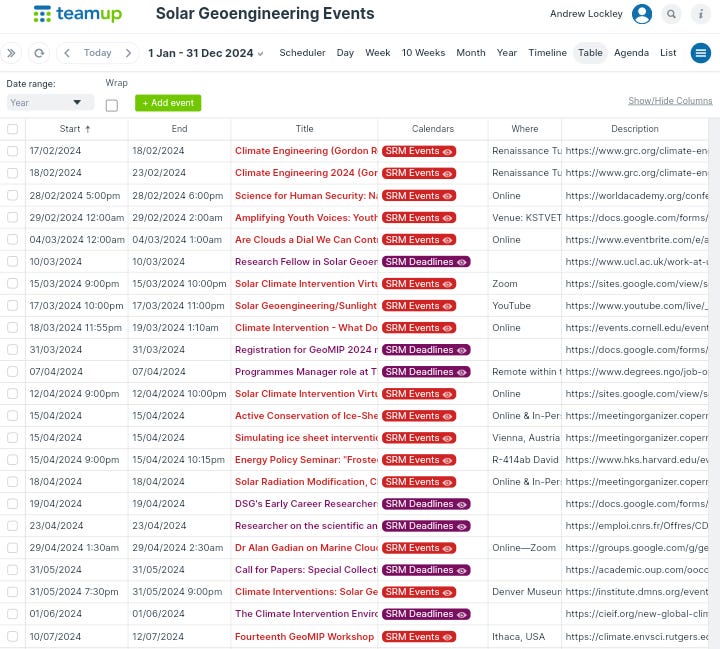The Solar Geoengineering Updates Newsletter (April'2024)
Welcome to the Solar Geoengineering Updates Newsletter, a monthly newsletter that updates you on the developments of everything SRM-related.
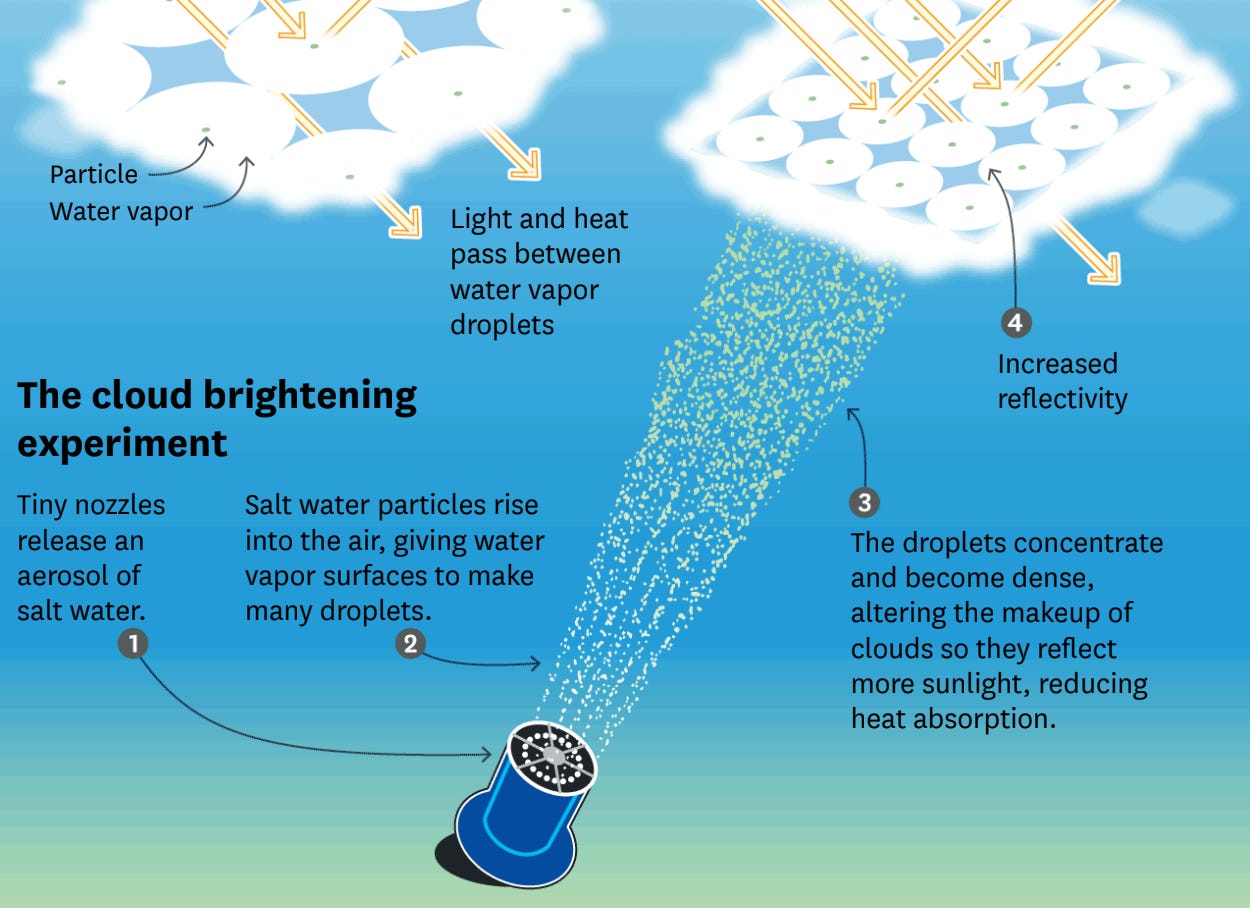
DEADLINES
(NEW) Call for Papers: Towards a Risk-Risk-Assessment of Solar Radiation Modification: Effectiveness, Feasibility, Side effects, Governance | Deadline for manuscript submissions: 31 May 2024
(NEW) Climate Intervention Environmental Impact Fund | Deadline for applying: 01 June 2024
SURVEY
Expert elicitation on meaningful baselines for SRM simulations
RESEARCH PAPERS
On thin ice: Solar geoengineering to manage tipping element risks in the cryosphere by 2040
Smith, W., Bartels, M., Boers, J., & Rice, C. (2024). On thin ice: Solar geoengineering to manage tipping element risks in the cryosphere by 2040.
On Nucleation Pathways and Particle Size Distribution Evolutions in Stratospheric Aircraft Exhaust Plumes with H2SO4 Enhancement
Yu, F., Anderson, B. E., Pierce, J. R., Wong, A., Nair, A., Luo, G., & Herb, J. (2024). On Nucleation Pathways and Particle Size Distribution Evolutions in Stratospheric Aircraft Exhaust Plumes with H2SO4 Enhancement. Environmental Science & Technology.
The Potential of Stratospheric Aerosol Injection to Reduce the Climatic Risks of Explosive Volcanic Eruptions
Quaglia, I., Visioni, D., Bednarz, E. M., MacMartin, D. G., & Kravitz, B. (2024). The potential of Stratospheric Aerosol Injection to reduce the climatic risks of explosive volcanic eruptions. Geophysical Research Letters, 51(8), e2023GL107702.
A protocol for model intercomparison of impacts of Marine Cloud Brightening Climate Intervention
Rasch, P., Hirasawa, H., Wu, M., Doherty, S., Wood, R., Wang, H., ... & Singh, H. (2024). A protocol for model intercomparison of impacts of Marine Cloud Brightening Climate Intervention. EGUsphere, 2024, 1-43.
Shedding light on the increased carbon uptake by a boreal forest under diffuse solar radiation across multiple scales
Neimane‐Šroma, S., Durand, M., Lintunen, A., Aalto, J., & Robson, T. M. (2024). Shedding light on the increased carbon uptake by a boreal forest under diffuse solar radiation across multiple scales. Global Change Biology, 30(4), e17275.
Speed of environmental change frames relative ecological risk in climate change and climate intervention scenarios
Hueholt, D. M., Barnes, E. A., Hurrell, J. W., & Morrison, A. L. (2024). Speed of environmental change frames relative ecological risk in climate change and climate intervention scenarios. Nature Communications, 15(1), 3332.
Regional Welfare Impacts from Options for Limiting Global Average Temperature
Ding, C., Kim, S., Singer, C., & Sriver, R. (2024). Regional Welfare Impacts from Options for Limiting Global Average Temperature.
A fully coupled solid particle microphysics scheme for stratospheric aerosol injections within the aerosol-chemistry-climate-model SOCOL-AERv2
Vattioni, S., Weber, R., Feinberg, A., Stenke, A., Dykema, J. A., Luo, B., ... & Chiodo, G. (2024). A fully coupled solid particle microphysics scheme for stratospheric aerosol injections within the aerosol-chemistry-climate-model SOCOL-AERv2. EGUsphere, 2024, 1-41.
Possible Mitigation of Global Cooling due to Supervolcanic Eruption via Intentional Release of Fluorinated Gases
Xu, Y., Ribar, N. P., Schade, G. W., Lockley, A. J., Zhang, Y. G., Sachnik, J., ... & Velders, G. J. (2023). Possible Mitigation of Global Cooling due to Supervolcanic Eruption via Intentional Release of Fluorinated Gases. Authorea Preprints.
Substantial cooling effect from aerosol-induced increase in tropical marine cloud cover
Chen, Y., Haywood, J., Wang, Y., Malavelle, F., Jordan, G., Peace, A., ... & Lohmann, U. (2024). Substantial cooling effect from aerosol-induced increase in tropical marine cloud cover. Nature Geoscience, 1-7.
G6-1.5K-SAI: a new Geoengineering Model Intercomparison Project (GeoMIP) experiment integrating recent advances in solar radiation modification studies
Visioni, D., Robock, A., Haywood, J., Henry, M., Tilmes, S., MacMartin, D. G., ... & Egbebiyi, T. S. (2023). G6-1.5 K-SAI: a new Geoengineering Model Intercomparison Project (GeoMIP) experiment integrating recent advances in solar radiation modification studies. EGUsphere, 2023, 1-21.
Climate engineering by Passive daytime radiative cooling: Moving beyond materials towards real-world applications
Aili, A., Jiang, T., Chen, J., Wen, Y., Yang, R., Yin, X., & Tan, G. (2024). Passive daytime radiative cooling: Moving beyond materials towards real-world applications. Next Energy, 3, 100121.
Rethinking the susceptibility-based strategy for marine cloud brightening climate intervention: experiment with CESM2 and its implications
Chen, C. C., Richter, J. H., Lee, W., MacMartin, D. G., & Kravitz, B. (2024). Rethinking the susceptibility-based strategy for marine cloud brightening climate intervention: experiment with CESM2 and its implications. Authorea Preprints.
Moral hazards and solar radiation management: Evidence from a large-scale online experiment
Schoenegger, P., & Mintz-Woo, K. (2024). Moral hazards and solar radiation management: Evidence from a large-scale online experiment. Journal of Environmental Psychology, 102288.
Australia, we need to talk about solar geoengineering
Symons, J., Fung, C., Jayaram, D., Kabbej, S., & McDonald, M. (2024). Australia, we need to talk about solar geoengineering. Australian Journal of International Affairs, 1-6.
Side Effects of Sulfur-Based Geoengineering Due To Absorptivity of Sulfate Aerosols
Wunderlin, E., Chiodo, G., Sukhodolov, T., Vattioni, S., Visioni, D., & Tilmes, S. (2024). Side effects of sulfur‐based geoengineering due to absorptivity of sulfate aerosols. Geophysical Research Letters, 51(4), e2023GL107285.
Solar Geoengineering, Free-Driving and Conflict: An Experimental Investigation
Cherry, T. L., Kroll, S., McEvoy, D. M., & Campoverde, D. (2024). Solar Geoengineering, Free-Driving and Conflict: An Experimental Investigation. Environmental and Resource Economics, 1-16.
Radiative forcing geoengineering causes higher risk of wildfires and permafrost thawing over the Arctic regions
Müller, R. C., Kim, J. S., Lee, H., Muri, H., Tjiputra, J., Yoon, J. H., & Schaepman-Strub, G. (2024). Radiative forcing geoengineering causes higher risk of wildfires and permafrost thawing over the Arctic regions. Communications Earth & Environment, 5(1), 180.
Ecohydrological responses to solar radiation changes
Wang, Y., Meili, N., & Fatichi, S. (2024). Ecohydrological responses to solar radiation changes. EGUsphere, 2024, 1-24.
Recent reductions in aerosol emissions have increased Earth’s energy imbalance
Hodnebrog, Ø., Myhre, G., Jouan, C., Andrews, T., Forster, P. M., Jia, H., ... & Schulz, M. (2024). Recent reductions in aerosol emissions have increased Earth’s energy imbalance. Communications Earth & Environment, 5(1), 166.
Public opinion about solar radiation management: A cross-cultural study in 20 countries around the world
Contzen, N., Perlaviciute, G., Steg, L., Reckels, S. C., Alves, S., Bidwell, D., ... & Sütterlin, B. (2024). Public opinion about solar radiation management: A cross-cultural study in 20 countries around the world. Climatic Change, 177(4), 1-25.
Solar radiation modification challenges decarbonization with renewable solar energy
Baur, S., Sanderson, B. M., Séférian, R., & Terray, L. (2023). Solar Radiation Modification challenges decarbonization with renewable solar energy. EGUsphere, 2023, 1-22.
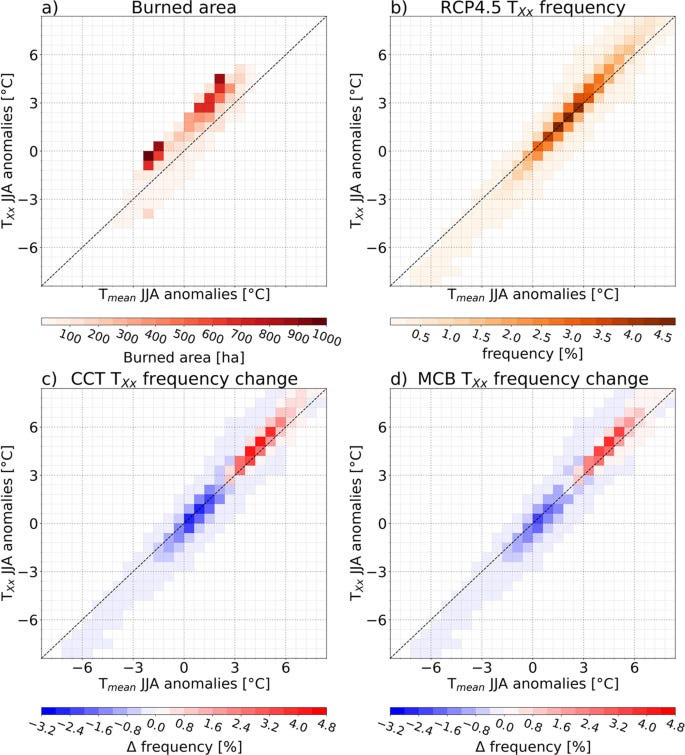
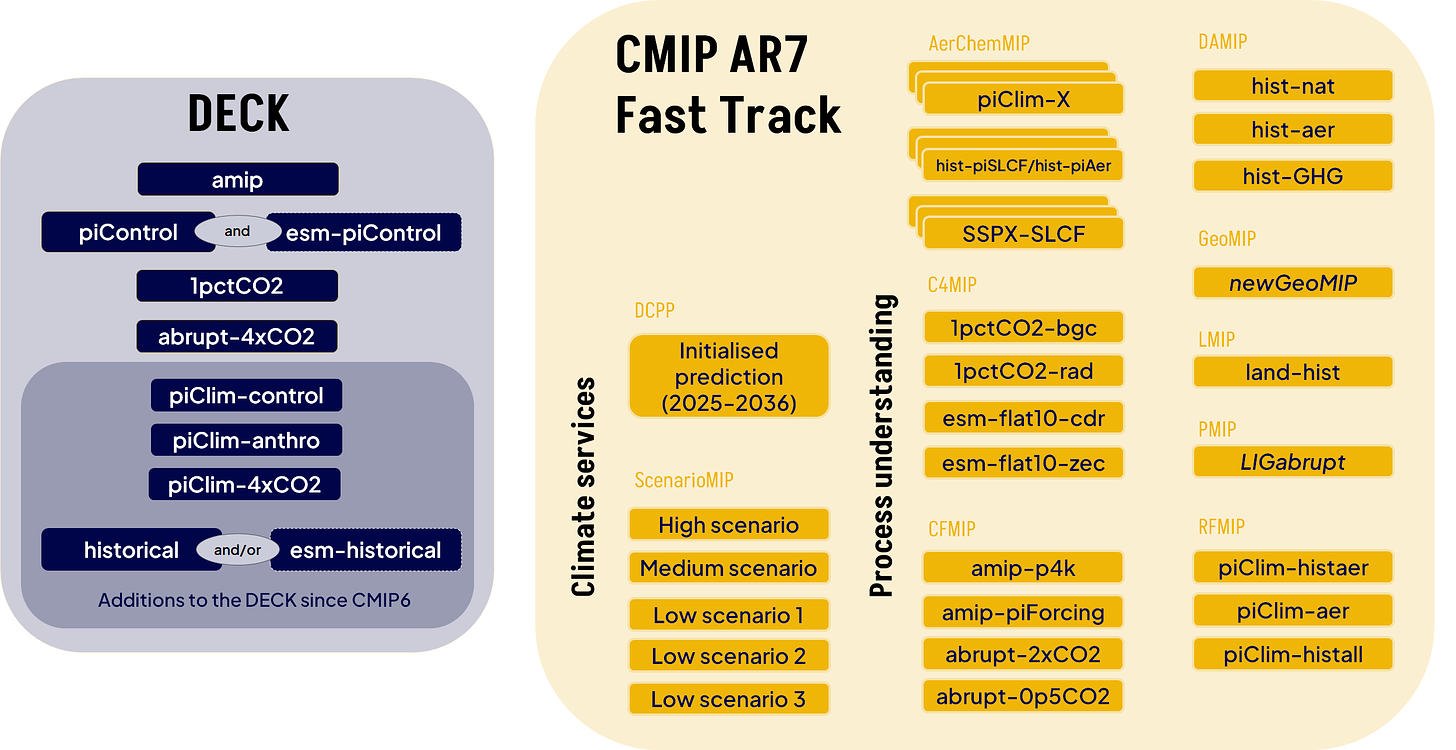
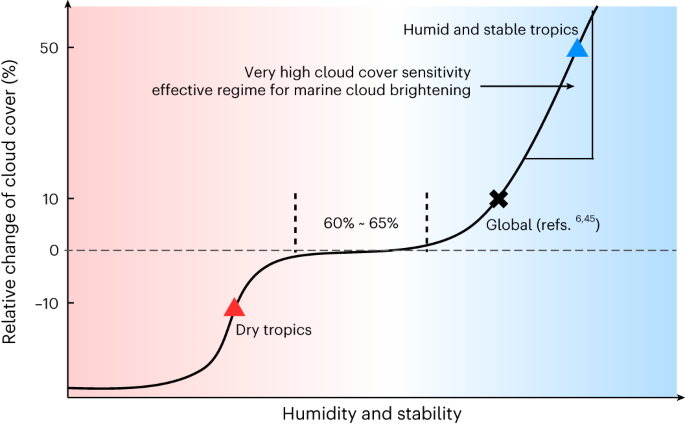
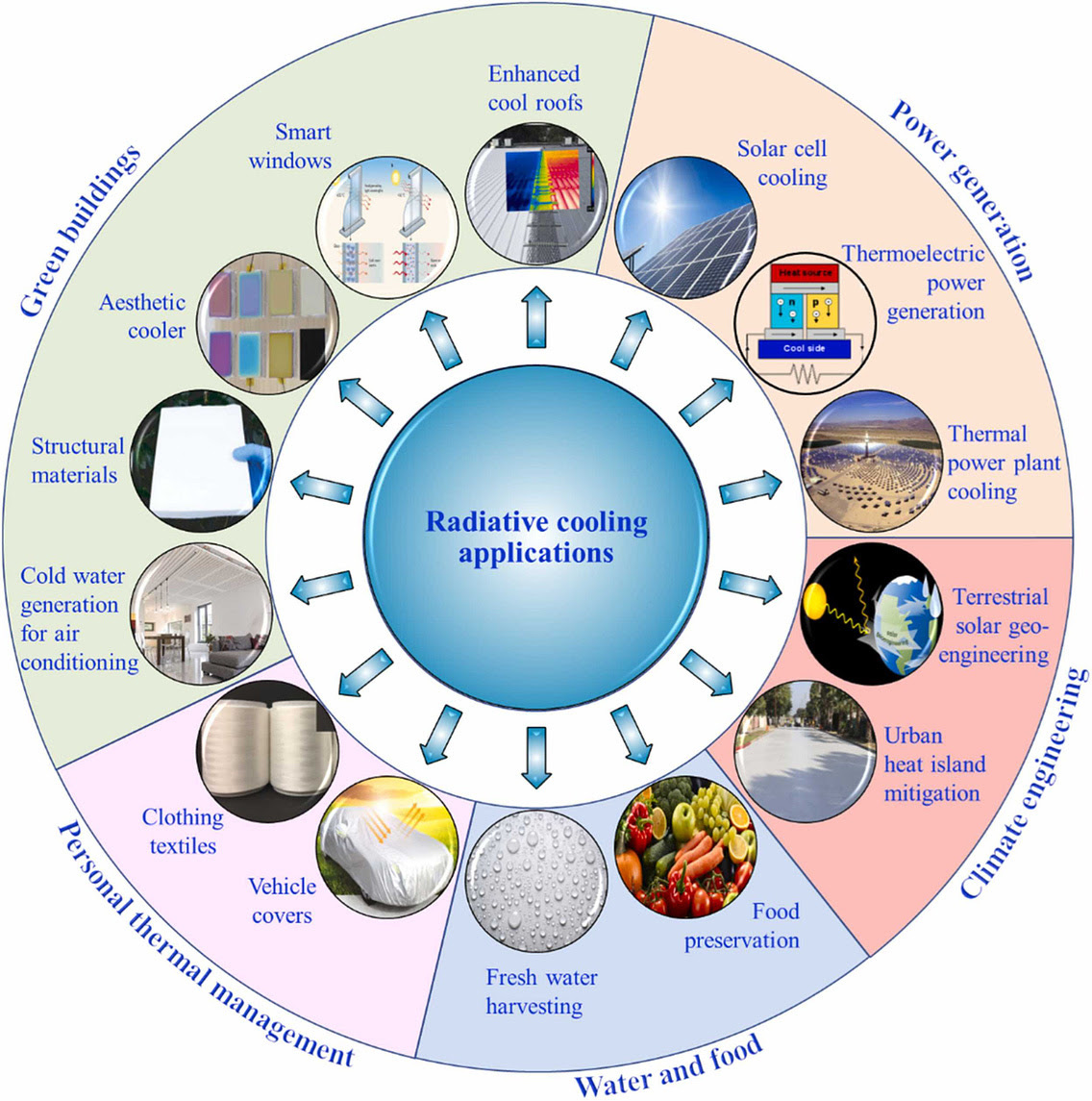
CONFERENCE PAPERS
Aerosols complex refractive indices determination from far infrared to UV: application to dust and residual ashes of biomass burning
Chehab, M., Herbin, H., Gosselin, S., Bizet, V., & Petitprez, D. (2024). Aerosols complex refractive indices determination from far infrared to UV: application to dust and residual ashes of biomass burning (No. EGU24-10689). Copernicus Meetings.
Targeted Climate Modification on land – A matter of scale
Dekker, S. C., de Boer, H. J., Koren, G. B., Staal, A., Theeuwen, J. J., & van Woesik, F. M. (2024). Targeted Climate Modification on land–A matter of scale (No. EGU24-4740). Copernicus Meetings.
WEB POSTS
African scientists gather in Cape Town to develop collaborative SRM research (The Degrees Initiative)
Solar geoengineering to cool the planet: Is it worth the risks? (Phys.Org)
Geoengineering Versus Natural Climate Solutions (Peace Magazine)
Geoengineering could save the ice sheets – but only if we start soon (New Scientist)
New scientific interventions are here to fight climate change. But they aren’t silver bullets (Los Angeles Times)
Talking About Tipping Points (Harvard Magazine)
Controversial methods to cool the Earth by reflecting sunlight gain traction as global temperatures rise (abc NEWS)
Silver Lining in the Clouds: Will the US Geoengineer? (E-International Relations)
Let’s talk about geoengineering! (LinkedIn)
Why We Need To Share Knowledge With Young People On The Ground: Lessons Learned From Nairobi And Mombasa (DSG)
Startups want to geoengineer a cooler planet. With few rules, experts see big risks (NPR)
The inadvertent geoengineering experiment that the world is now shutting off (MIT Technology Review)
What values do SRM researchers share? (Plan A+)
Staring at the Sun (EPFL)
Warming Is Getting Worse. So They Just Tested a Way to Deflect the Sun (The New York Times)
The hard lessons of Harvard’s failed geoengineering experiment (MIT Technology Review)
New Climate Studies and Public Engagement Center Launch in the San Francisco Bay Area (PR Newswire)
Climate engineering carries serious national security risks − countries facing extreme heat may try it anyway, and the world needs to be prepared (The Conversation)
Climate engineering carries serious national security risks—countries facing extreme heat may try it anyway (Phys.Org)
Why artificial submarine curtains won't save West Antarctica's retreating glaciers (Phys.Org)
Geoengineering Techniques Assessment: Arctic, Antarctic and Amazonian Regions (Arctic and North Atlantic Oceans)
Tennessee outlaws release of airborne chemicals (BBC)
THESIS
Messing with Nature? Environmental Ethics and the Challenge of Geoengineering
REPORTS
Field Study of Controlled-Release Sea Salt Aerosol Plume
JOB OPPORTUNITY
PhD Studentship: Machine learning strategies for Marine Cloud Brightening at the Centre for Climate Repair (CCR) and the Data, Vibration and Uncertainty (CVU) group, University of Cambridge
UPCOMING EVENTS
(NEW) Climate Interventions: Solar Geoengineering by The Institute for Science & Policy and The Institute for Responsible Carbon Removal | 21 May 2024
Fourteenth GeoMIP Workshop | Ithaca, USA | 10-12 July 2024
GUIDELINES:
Sync selected events to your default calendar in these simple steps:
1) Click on the event you want to sync.
2) Tap the menu icon (three vertical lines) at the top left.
3) Choose 'Share.'
4) Pick your default calendar.
5) Save the event.
Sync the entire Teamup Calendar to your default calendar with these simple steps:
1) Tap the menu icon (three vertical lines) at the top right.
2) Choose 'Preferences.'
3) Click 'iCalendar Feeds.'
4) Copy the URL shown for 'Solar Geoengineering Events / SRM Deadlines.'’
5) Paste the URL into your default calendar settings (Open Google Calendar in your web browser if you are using Gcal).
6) Click 'Subscribe' or 'Add Calendar.'
For more detailed instructions, visit: https://calendar.teamup.com/kb/subscribe-to-teamup-icalendar-feeds/
You can directly sync all Solar Geoengineering events to your default calendars by pressing the link below:
PODCASTS
Shuchi Talati on ethics and governance of solar geoengineering | Challenging Climate
"Today’s guest is Dr. Shuchi Talati, a climate technology and governance expert and the founder of The Alliance for Just Deliberation on Solar Geoengineering. In this episode, we discuss ethics and governance of solar geoengineering, the formal cancellation of Harvard’s SCoPEx experiment, and the UN Environment Assembly deliberations on Solar Radiation Modification."
Terrapunks & Geoengineering w/ Luke Iseman | Redacted Islands
"Luke Iseman joins to talk about his project Make Sunsets, an ambitious solar geoengineering startup that aims to cool the planet by launching reflective clouds into the stratosphere.
In this episode, we chat about creating clouds, sci-fi author Neal Stephenson, living off-grid in Mexico,doomersding, spearfishing, Y Combinator, the Great Carbon Credit Tree Scam, volcano ash reflecting sunlight, wtf is solar geoengineering, how weather balloons work, reducing global temperatures, cooling credits, the difference between solarpunk and terrapunk, “propaganda of the deed”, greenwashing, combating climate doomerism, nervous scientists in ivory towers, cutting red tape, Kiribati, St. Lucia, citizenship by investment, how countries are reacting to geoengineering, NOAA, and the ethics of climate capitalism."
Startups want to cool Earth by reflecting sunlight. There are few rules and big risks | npr
"Solar geoengineering — increasing the sunlight reflected back into space to cool the planet — is gaining the attention of people looking for climate solutions. But critics say it comes with risks."
SAI and international conflict - Morrissey | Reviewer 2 does geoengineering
"William Morrissey explains how SAI could lead to conflict and counter-geoengineering. @geoengineering1 isn't convinced it will all end so badly.
Avoiding atmospheric anarchy: Geoengineering as a source of interstate tension —William Morrissey
https://doi.org/10.1177/27538796231221597"
An Engineering Experiment to Cool the Earth | The Daily
"Decades of efforts to cut carbon emissions have failed to significantly slow the rate of global warming, so scientists are now turning to bolder approaches.
Christopher Flavelle, who writes about climate change for The Times, discusses efforts to engineer our way out of the climate crisis.”
Ulrike Lohmann on clouds, aerosols and solar radiation modification | Challenging Climate
"Today’s guest is Ulrike Lohmann, Professor of Experimental Atmospheric Physics in the Institute for Atmospheric and Climate Science at ETH Zurich. Lohmann is also the Principal Investigator of the CLOUDLAB project, a multi-year project to investigate aerosol-cloud interactions in wintertime stratus clouds over the Alps.
In this episode, we discuss the role of clouds and aerosols in our climate. We dive deep into aerosol-cloud interactions to uncover the science behind solar radiation modification (SRM) techniques like marine cloud brightening, and discuss a novel proposed SRM technique - Mixed Phase Cloud Thinning."
YOUTUBE VIDEOS
Solar Climate Intervention Virtual Symposium 10 (Dr. Ilaria Quaglia & Dr. Wake Smith) | Solar Climate Intervention Talks
"Dr. Ilaria Quaglia (Cornell University, USA): "The potential of Stratospheric Aerosol Injection to reduce the climatic risks of explosive volcanic eruptions."
Dr. Wake Smith (Yale University, USA): "Frosted Tips: An Alternative Rationale for Stratospheric Aerosol Injection."
E is for Earth Day, H is for Hope, B is for Books | Andrew Revkin
"Three climate journalists lay out the state of the SRM sunblocking technofix, touch on methane capture and more."
Solar geoengineering: Can it solve the climate crisis? | Global News
"On top of cutting down on emissions, solar geoengineering is being touted as an alternative approach to slow global warming — but it is also an unproven technology.
Debate is especially growing about stratospheric aerosol injection, a type of solar geoengineering which could someday help slow the effects of climate change.
Eric Sorensen explains the science, benefits and concerns of this potential solution to the climate crisis."
Playing God? Weather Change Experiments in San Francisco | CBN News
"What are the consequences of this? Potentially catastrophic." Scientists onboard a decommissioned aircraft carrier are conducting marine cloud brightening experiments hoping to stop global warming. The CO2 Coalition's Greg Wrightstone says first, the scientists must consider the Hippocratic oath to "do no harm."
Sandro Vattioni: Risks and benefits of climate intervention via stratospheric aerosol injection | NCAR Atmospheric Chemistry Observations & Modeling
"Abstract: Recent studies have suggested that injection of solid particles such as alumina and calcite instead of SO2 for climate intervention via stratospheric aerosol injection (SAI) could reduce some of the adverse side effects of SAI such as ozone depletion and stratospheric heating. However, the expected improvements are subject to large uncertainties. We constrain some of these uncertainties by experimental work on calcite particles using elastic recoil detection analysis and in-situ X-ray photoelectron spectroscopy. Subsequently, we use a global aerosol-chemistry-climate model that, for the first time, interactively couples microphysical and chemical processes of solid particles as well as sulfuric acid aerosols with model radiation and transport. Notably, SAI by solid particles only leads to more effective radiative forcing per aerosol burden compared to sulfur-based SAI, not per injected mass. However, reduced stratospheric warming remains a major advantage of solid particles. Furthermore, different assumptions on the heterogeneous chemistry of solid particles, based on the available experimental data, result in drastically different impacts on stratospheric ozone layer. For alumina particles, which are thought to not undergo chemical aging in the stratosphere we present a sensitivity analysis of the ozone response to quantify uncertainty. For the alkaline calcite particles, which are thought to undergo chemical aging in the stratosphere via reaction with acids we find even larger uncertainties due to unknown reaction pathways and highly uncertain rates under stratospheric conditions. Uncertainty in predicted stratospheric ozone changes can only be reduced via additional laboratory experiments under stratospheric conditions."
The USA's first solar geo-engineering test | The Laughington Post
"The first outdoor test to limit global warming by increasing #cloud cover. The experiment, which organizers did not widely announce to avoid public backlash, marks the acceleration of a contentious field of research known as “solar radiation modification”. The concept involves shooting substances such as aerosols into the sky to reflect sunlight away from the Earth."
Marine Cloud Brightening - Tribute to Stephen Salter | Climate Emergency Forum
"The Climate Emergency Forum hosts a discussion about the late Stephen Salter, a pioneering professor of engineering at the University of Edinburgh, and his work on marine cloud brightening (MCB) as a potential solution for mitigating global warming.
This video was recorded on March 27th, 2024, and published on April 14th, 2024.
The participants reflect on Salter's innovative ideas and creative mindset. A key focus is Salter's proposal to use a fleet of unmanned ships to spray fine sea water droplets into marine clouds to increase their reflectivity and albedo, thereby reflecting more sunlight back into space and cooling the planet. Salter provided calculations on the number of ships needed for different cooling goals, such as reversing sea level rise or preserving Arctic ice. The dialogue highlights the relatively low cost and scalability of this approach versus other geoengineering methods.
The participants emphasize the need for solutions like MCB, given the rapidly worsening climate crisis. However, they also acknowledge the public opposition and lack of media coverage around such unconventional approaches. They stress the importance of engaging in broader conversations, good governance, and bringing the public on board through strategic communication efforts to explain the vision and overcome the code of silence around these topics in mainstream discourse.
Overall, the dialogue serves as a tribute to Salter's innovative work while underscoring the potential of marine cloud brightening as a viable, affordable, and environmentally-friendly way to help mitigate global warming, if implemented responsibly and with proper public support."
Can Mirrors on the Ground Cool the Earth? w/ Dr. Ye Tao, Founder of MEER.org | Climate Chat
"In this Climate Chat episode, we interview Dr. Ye Tao, the founder and Executive Director of MEER.org. MEER stands for "Mirrors for Earth's Energy Rebalancing." Dr. Tao proposes deploying mirrors on the ground (or oceans) to reflect sunlight back into space in order to reduce Earth's Energy Imbalance and cool the Earth. We will discuss the scale of mirrors needed to reverse the impacts of greenhouse gas warming as well as feasibility, cost, and side effects of implementing MEER. Besides full-scale deployment, Dr. Tao believes there are benefits to deploying smaller scale mirror systems.
Dr. Tao also has interesting takes on other climate-related issues such as the side effects of renewable energy systems, low cost ways to implement Carbon Dioxide Removal (CDR), and the climate path we are on if we do not implement MEER or some other form of Sunlight Reflection Methods (SRM)."





